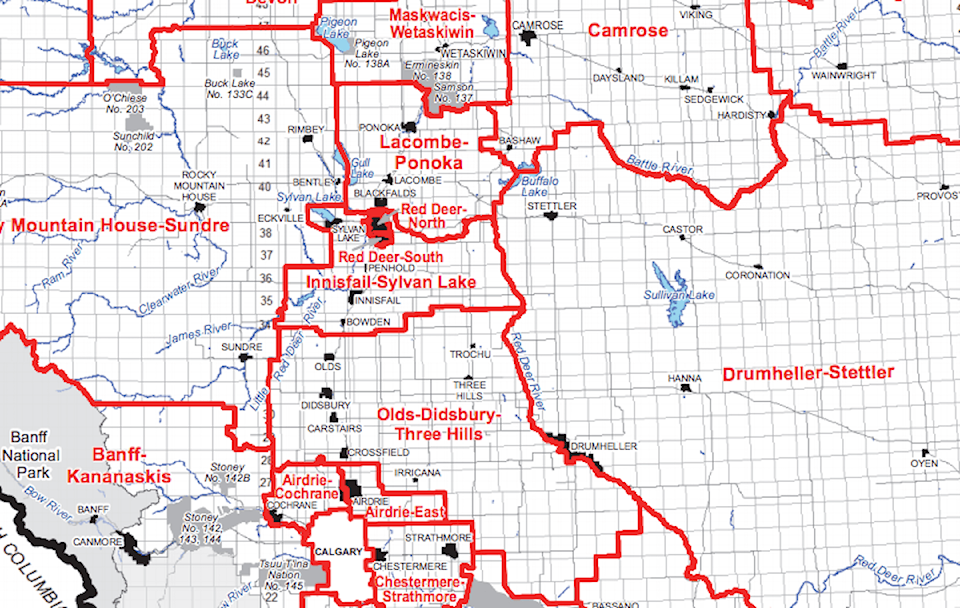Several Central Alberta ridings will have a new look if the Alberta Electoral Boundaries Commission’s recommendations go ahead.
In Red Deer, only a minor change is proposed, which would unite Deer Park subdivision in Red Deer South. The existing configuration splits the neighbourhood between Red Deer South and Red Deer North.
“Many submitters recommended the unification of that community …” says the report.
Overall, the commission proposes that the political map be changed to include more urban ridings and fewer rural ridings.
The report by the Electoral Boundaries Commission will now go to the Alberta legislature for a vote.
The commission recommends creating a total of three new constituencies in Calgary, Edmonton and the Airdrie-Cochrane area.
It also says three rural ridings should be cut by consolidating some constituencies in less-populated parts of the province.
The report says the change is needed to reflect a growing population in some urban areas and fewer people in rural Alberta.
It is recommended that five electoral divisions, including Rimbey-Rocky Mountain House, West Yellowhead, Drayton Valley-Devon, Whitecourt-Ste. Anne and Stony Plain, be turned into four electoral divisions.
Drumheller-Stettler would be affected by a recommendation to reduce seven ridings to six. The others include Battle-River Wainright, Strathmore-Brooks, Little Bow, Cardston-Taber-Warner, Cypress-Medicine Hat and Vermilion-Lloydminster.
In the Lacombe-Ponoka riding, it is recommended that Maskwacis, which includes Samson Cree Nation and Ermineskin Cree Nation, be moved to a new riding called Maskwacis-Wetaskiwin.
In Innisfail-Sylvan Lake, only a minor tweak to move a small portion in the southwest corner of the riding into Rocky Mountain House-Sundre is proposed.
Justice Myra Bielby, the commission’s chairwoman, says the recommendations are meant to ensure effective representation of voters in the legislature.
“Albertans’ right to effective representation in government is fundamental to democracy,” Bielby said in a statement Thursday.
The commission noted that the province’s population has grown by 14 per cent since the last time electoral boundaries were changed in 2010.
The three new electoral divisions would be called Airdrie-Cochrane, Calgary North East and Edmonton South.
Constituencies would be consolidated in a number of areas across the province.
Lac La Biche-St. Paul-Two Hills, Athabasca-Sturgeon-Redwater, Fort Saskatchewan-Vegreville and Bonnyville-Cold Lake would be rolled into three in the central-east region.
One member of the commission, Gwen Day, did not support the cut in rural ridings.
She suggested the government should have allowed the commission to recommend an increase in the total number of constituencies instead of keeping it at 87.
“I don’t think it is the best and wisest way to handle this situation,” she said.
Nathan Cooper, interim leader of the United Conservative Party, said the recommended changes would make it more difficult for lawmakers from rural areas to represent their constituents.
“While this report has made some changes to riding sizes and boundaries, it continues to miss the mark by placing too large of a value on population, rather than striking the right balance to ensure effective representation,” he said.
The report cites 2016 federal census information that shows about three-quarters of Alberta’s four million people live in cities or suburbs.
